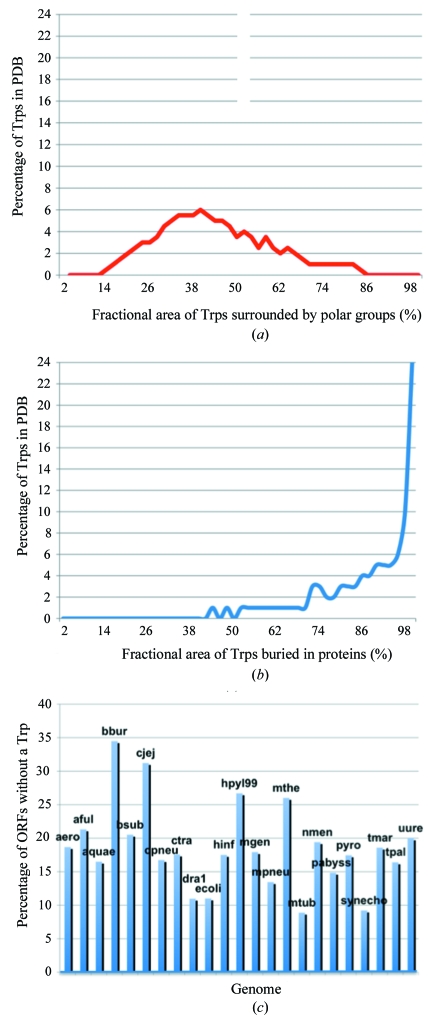Figure 1.
Analyses of tryptophan residues. The environmental distribution of 2665 tryptophans from a sample set of crystal structures show that (a) tryptophans tend to be amphipathic in nature, being found in 42.9% ± 16.8% polar environments, and (b) have an average of 84.2% ± 19.2% of their surface area buried within proteins. (c) The percentage of open reading frames that are without a tryptophan is on average 18.5% ± 6.4% in the shown genomes.

